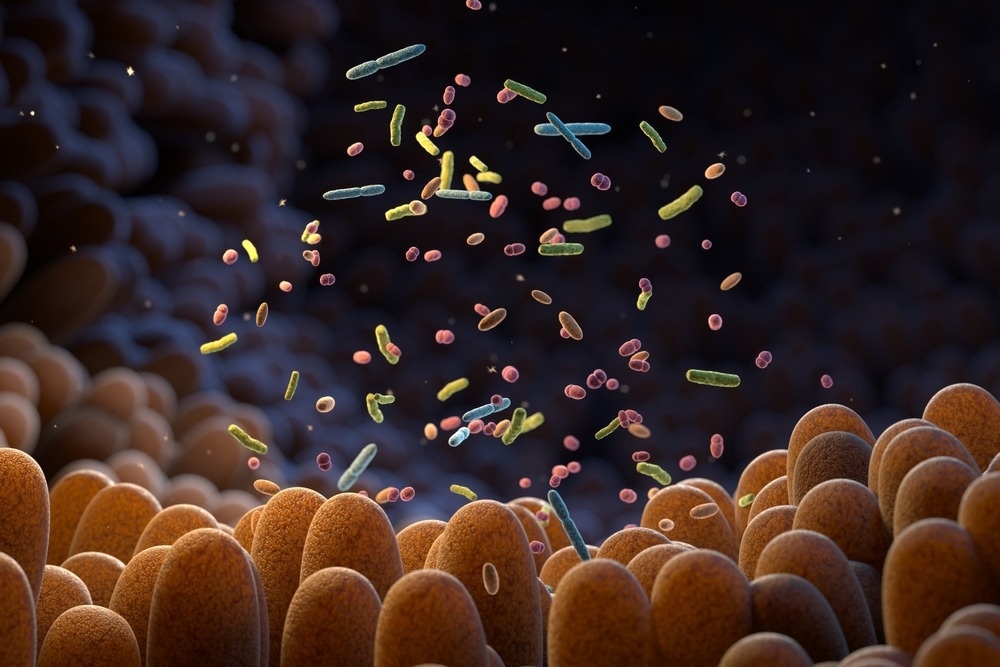Researchers developed a therapeutic food that promotes beneficial gut microbes.
In a recent study published in Science, researchers from the Washington University School of Medicine investigated the role of gut microbiota in improving growth in malnourished children in Bangladesh.
They found that a specific enzyme — a fatty acid amide hydrolase (FAAH) — from Faecalibacterium prausnitzii significantly influences immune function pathways through its role in hydrolyzing and synthesizing the biomolecules required for growth.
Background
Research on gut microbiomes indicates that microbial communities can produce and modify host signaling molecules that influence a wide range of biological functions such as metabolism, brain activity, and immunity. This interaction between the gut microbiome and the host is especially important in the first few years of growth.
Recent studies among Bangladeshi children have shown that undernutrition has a disruptive effect on the gut microbiome, leading to an immature gut microbiome community that is associated with poor overall growth. This led to the development of a special microbiota-directed complementary food called MDCF-2 that is designed to enhance the beneficial gut bacteria in malnourished children.
Clinical trials for MDCF-2 have revealed significant improvements in weight gain, gut health markers, and an increase in height in malnourished children. Furthermore, these trials also found that the MDCF-2 diet increased the abundance of F. prausnitzii, which contained the enzyme FAAH that regulated health and growth.
About the study
In the present study, the researchers further explored the role of the FAAH enzyme from F. prausnitzii to understand how the MDCF-2 diet enhanced specific bacterial activity and increased the production of bioactive molecules that benefit growth in children.
The researchers used several experimental methods to investigate the enzymatic activities of FAAH from the F. prausnitzii strain Bg7063, focusing on the enzyme’s role in degrading specific fatty acid compounds known as N-acylethanolamides.
Murine models were used for colonizing experiments using either a 13-member or 14-member bacterial community, with the latter one containing the F. prausnitzii Bg7063 strain. The levels of two N-acylethanolamides, oleoylethanolamide (OEA) and palmitoylethanolamide (PEA), in the cecal contents of the mice were measured using mass spectrometry.
Additionally, Bg7063 cultures were supplemented with isotope-labeled PEA to trace its degradation and confirm its utilization. Various mammalian FAAH inhibitors were also applied to determine whether these inhibitors prevented the functioning of the bacterial FAAH.
Ion-exchange chromatography methods were also used to identify the protein involved in the degradation of N-acylethanolamides. Moreover, enzymatic assays involving different amine and fatty acid compounds were used to test the substrate preference of FAAH. The structural differences between mammalian and bacterial FAAH were also explored.
Furthermore, given that several N-acyl amides derived from gut bacteria are known to modulate mammalian G-protein coupled receptor (GPCR) and nuclear hormone receptor (NHR) activity, the researchers examined whether the N-acyl amides derived from OEA conversion could have pharmacological implications through GPCR-mediated processes. Therefore, the researchers conducted a series of assays to test how various fatty acid amides such as acted on GPCRs and NHRs.
The study also included in vivo assays in mice to study the biological effects of various fatty acid amides. Furthermore, to explore the impact on gene expression in the intestine, the researchers conducted ribonucleic acid (RNA) sequencing of the liver and various parts of the intestines. Gene set enrichment analysis was performed to analyze differential gene expression.
Lastly, fecal samples from malnourished Bangladeshi children who were undergoing a dietary intervention involving MDCF-2 were analyzed to confirm the role of FAAH from F. prausnitzii in regulating the N-acyl amide levels and regulating growth.
Results
The study found that MDCF-2 dietary intervention could influence the chemical composition of the gut by modulating the activity of the FAAH from F. prausnitzii, which impacted the levels of N-acyl amides in the gut. The results reported that the FAAH enzyme was capable of dual activity where it could hydrolyze and synthesize diverse N-acyl amides.
Furthermore, unlike human FAAH, the FAAH from F. prausnitzii operated on a wide range of substrates and lacked sensitivity to common inhibitors of enzymatic activity, making it an important modulator of gut signaling molecules.
Detailed analyses in the study showed that FAAH from F. prausnitzii could alter the levels of bioactive amides such as OEA, affecting fat metabolism and satiety through peroxisome proliferator activated receptor signaling pathways.
In the clinical trials, the children undergoing the MDCF-2-based dietary intervention showed lower levels of OEA in the fecal samples and improved growth. This reduction of OEA is potentially modulated through FAAH from F. prausnitzii, highlighting the link between gut microbial activity and the regulation of host appetite. Furthermore, the processing of both neuroactive and immune-modulating molecules by FAAH indicated that it could influence immune responses and moods.
Conclusions
Overall, the findings highlighted the potential use of FAAH from F. prausnitzii for microbiome-based therapy and the regulation of gut metabolites that impact appetite, immunity, inflammation, and moods. These results signified an important step in paving the way for future microbial interventions.
Journal reference:
- Cheng, J., Venkatesh, S., Ke, K., Barratt, M. J., & Gordon, J. I. (n.d.). A human gut Faecalibacterium prausnitzii fatty acid amide hydrolase. Science, 386(6720), eado6828. :10. doi:1126/science.ado6828 https://www.science.org/doi/10.1126/science.ado6828
Source link : News-Medica

